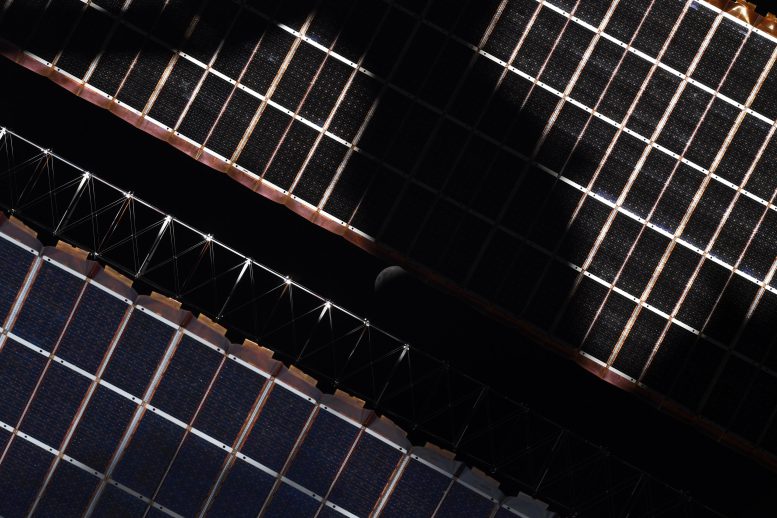

- #Images from international space station download
- #Images from international space station free
- #Images from international space station windows

#Images from international space station windows
And if you've ever struggled with unwanted reflections when shooting through glass, the challenges of photographing through four-pane windows high above the Earth that Dr. At the 3:58 mark you get a look at six Nikon D3S bodies mounted inside the observation deck. Go to the 1:20 mark for a fascinating sequence that shows the opening of the viewing hatches on the ISS observation deck. Pettit in which he discusses the considerable challenges of photographing from space. The video combines time-lapse footage that Malin has processed using (with permission) images taken aboard the ISS, with a lecture by Dr. Don Pettit, a keen photography aficianado, who uses an arsenal of Nikon DSLRs to document the unique perspective of Earth from high above it. Caption by Sara Schmidt, GeoControl Systems, JETS Contract at NASA-JSC.Austrian photography enthusiast Christopher Malin has produced a short film featuring time-lapse photography taken by astronauts aboard the International Space Station (ISS). The film is a tribute to the work of NASA astronaut Dr. Additional images taken by astronauts and cosmonauts can be viewed at the NASA/JSC Gateway to Astronaut Photography of Earth. The International Space Station Program supports the laboratory as part of the ISS National Lab to help astronauts take pictures of Earth that will be of the greatest value to scientists and the public, and to make those images freely available on the Internet. The image has been cropped and enhanced to improve contrast, and lens artifacts have been removed.
#Images from international space station download
The image was taken by a member of the Expedition 66 crew. Buy and download royalty-free image ID 6951108: International Space Station Flying Over The Earth. It is provided by the ISS Crew Earth Observations Facility and the Earth Science and Remote Sensing Unit, Johnson Space Center. Huge collection, amazing choice, 100+ million high quality, affordable RF and RM images. Today they appear as dry lake floors encrusted with salt.Īstronaut photograph ISS066-E-139823 was acquired on February 5, 2022, with a Nikon D5 digital camera using a focal length of 200 millimeters. Find the perfect sun international space station stock photo. ( Such an event was underway at the time of this photo.) Both Uyuni and Coipasa are remnants of saline paleolakes that dried up thousands of years ago.
#Images from international space station free
Find over 100+ of the best free international space station images. But during Bolivia’s rainy season, rivers can carry sediment rich in microbes and dark-colored volcanic minerals onto the flats. Download the perfect international space station pictures. Widescreen international space station wallpaper 2560×1600 hd. Space station iss world laboratory light pictures 3840×2160. Space station from earth desktop wallpaper. Nsa international space station wallpaper 1920×1200. High-energy X-rays, tracked by NASAs NuSTAR. International Space Station Wallpaper HD Free download. The salars are typically a bright white color when viewed from orbit. This 2015 image of our sun is a composite from three different spacecrafts measuring three different kinds of energy. Domes and lava flows appear on the eastern side of Tunupa, and the volcano is adjacent to other eroded volcanic fields and craters, including Jayu Khota and Titivilla. The flanks of the volcano’s cone are incised by valleys that were eroded by ancient glaciers and stream flows. Last active about 1.4 million years ago, Tunupa is now considered dormant. The volcano is a composite cone-a large, complex volcano that is often covered by lava flows, pyroclastic and mudflow deposits, and domes. The astronauts and cosmonauts on the International Space Station take pictures and videos of Earth nearly every day, and over a year, that adds up to.

Tunupa Volcano is located at the center of the Southern Altiplano, or the Andean Plateau, and rises as high as 5.3 kilometers (3.3 miles) in elevation. These salt flats have variable sediment cover and microbial populations, leading to darker and lighter surface hues across their areas. An astronaut onboard the International Space Station (ISS) shot this photograph of the Tunupa Volcano, which is situated on a peninsula between two of Bolivia’s largest salt flats, Salar de Uyuni and Salar de Coipasa.


 0 kommentar(er)
0 kommentar(er)
